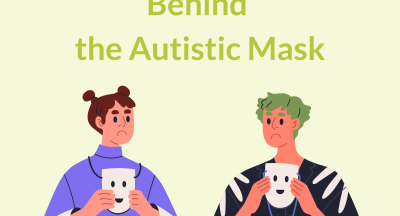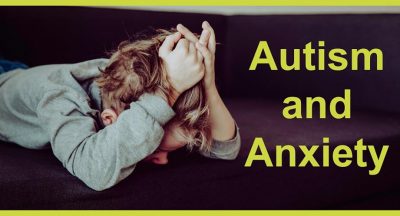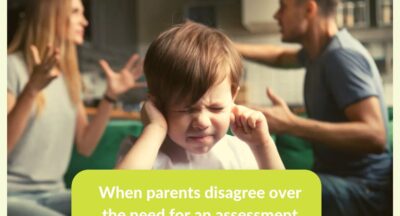
Last updated: 25th July 2025
Following on from the previous article regarding autistic children who mask, this article is going to look specifically at autistic boys who mask. These boys seem to fall into two distinct categories. The first group is those who understand the rules at school and appear to manage the structure of school very well, but who are often struggling socially and academically and who keep ‘below the radar’ whilst at school.
When teachers and other staff at school report that they are doing well socially and have lots of friends, sometimes they will need to look more closely at the quality of these friendships – is the young person on the periphery of the social group in the playground, looking for an opportunity to join in? Do they go on ‘play-dates’ and more importantly, are they invited back for a second or third visit? This can cause stress and anxiety because he will have no idea why this happens or what to do to fix it.
These young people also often have what psychologists refer to as a ‘spiky profile’ in terms of their IQ. They may be exceptionally good verbally but have much poorer non-verbal skills. This may lead to them being poor at mathematics and/or poor at organising themselves. They may also have difficulties with auditory memory. Basically, information goes in one ear and out the other without being fully processed, so the young person will not be able to follow an instruction given verbally. This will more than likely mean that homework instructions will be forgotten. If you then combine that with poor processing speed (another very common problem for young autistic people), the poor child will not even be able to copy information off the board or complete work in time. It is hardly surprising that this apparently well-behaved child becomes angry and stressed in the safety of his own home. It is essential that teaching staff (and parents) recognise that for some autistic children, it is not a case of ‘won’t do’ but ‘can’t do’.
This can lead to social and behavioural difficulties and social vulnerability.
The second group of boys who tend to mask their difficulties are those higher functioning boys who appear superficially sociable, but who often end up becoming the class clown or mixing with the wrong type of peers in order to fit in. Going back a number of years now a well-known Psychiatrist, Digby Tantam, in his book Autism Spectrum Disorders through the lifespan, talked about an ‘Atypical Asperger’s’ profile. These were young people, usually boys, where the key impairment is in the area of non-verbal interpretation. This leads to a lack of ability to empathise with the perspective of another person, and an inability to see the potential consequences and impact upon others of certain actions. This can lead to social and behavioural difficulties and social vulnerability. Atypical Asperger’s syndrome (as described by Digby Tantam) often co-exists with attention deficit hyperactivity disorder (ADHD), or attention deficit disorder (ADD). These boys will often fail at school, with many being excluded or becoming effectively marginalised from the education system by the age of fourteen.
They will often mimic the other boys
Although they often manage to form a number of superficial friendships, they will struggle to maintain these, and often suffer from low self-esteem and poor identity. This tends to encourage them to either become the class joker (in an attempt to ‘fit in’), or behave in an increasingly outrageous or anti-social manner. At this point, they often become more aggressive – towards people and objects – and frequently they refuse to obey rules of any kind. This can lead to them mixing with other ‘troublemakers’. However, there continues to be a naivety about this group with them frequently getting caught or scapegoated.
Quite often, when the police or other authority figures are called, these boys are the ones left standing there, looking around when all the others have run off. They will often mimic the other boys (in terms of clothes, accent or expressions that appear to be ‘cool’). However, they very often get this wrong and, to their peers, they can appear odd or an easy target.
The overriding feature of these boys is likely to be, once again, anxiety. Although obsessive special interests tend to be less common in this sub-group (often due to co-morbid ADHD), cognitive rigidity is still present and can manifest itself in the inability to see anyone else’s point of view or admit that they may be wrong. In addition, very literal thinking, and a lack of ability to understand and process ambiguous language and metaphors, leads to frequent misunderstanding and this is often coupled with an inability to ‘move on’ from what they see as ‘injustice’.
I hope this week’s blog has shown that it is not just girls who mask, but sometimes autistic boys can be just as tricky to spot.
We’ve recently launched our Psychoeducation Resource Centre, which contains lots of useful information, beginning with our first guide on Autistic Masking that aims to help understand and provide tips for unmasking.
In the next article I will be discussing the strategies that schools can use to help manage and support the child with PDA in the school environment – Supporting the child with PDA in the classroom – Part One
Related Posts
Diagnostic concerns and revisions to the DSM 5
05/04/2022
Since the launch in March 2022 of the updated DSM-5 (now known as the DSM-5-TR),...
Autism, anxiety and the impact upon parents … four years on
16/09/2021
This article is an update of our original article written in 2017 – long before...
When parents disagree over the need for an assessment
14/07/2022
Parents disagreeing about the need for exploration/identification of Autism in...
Changing the scissors: A call for a truly neuro-inclusive world
21/07/2025
For too long, our collective approach to supporting neurodivergent children has...







